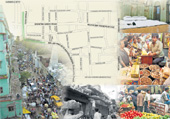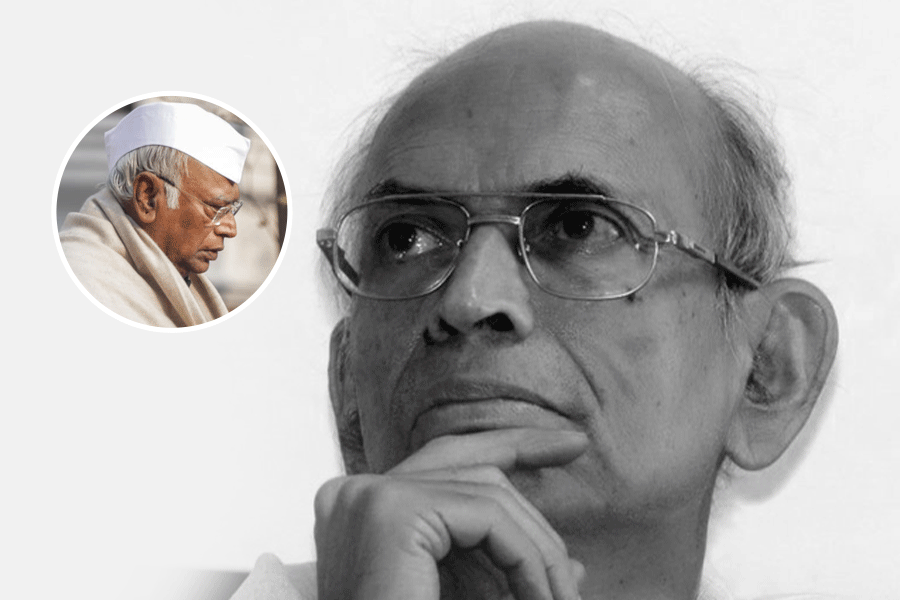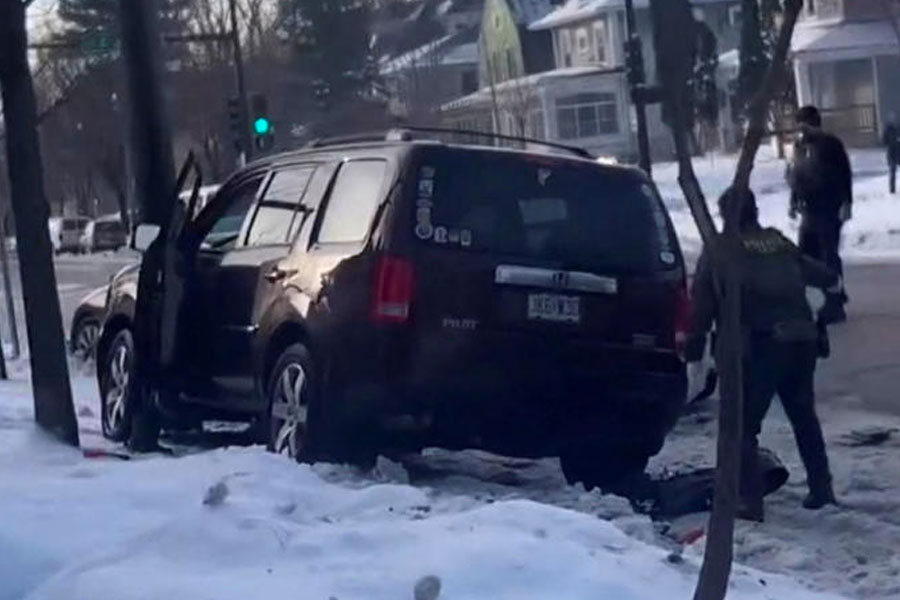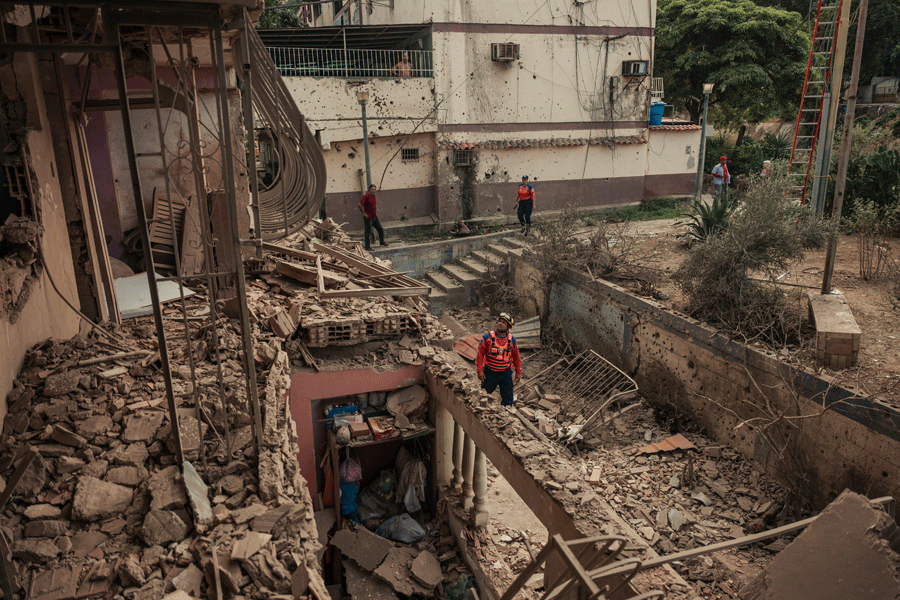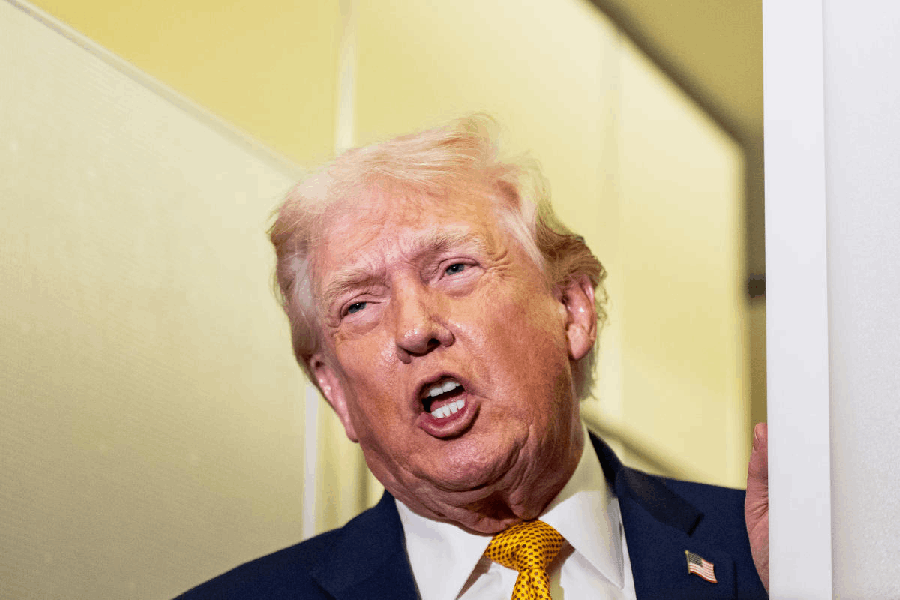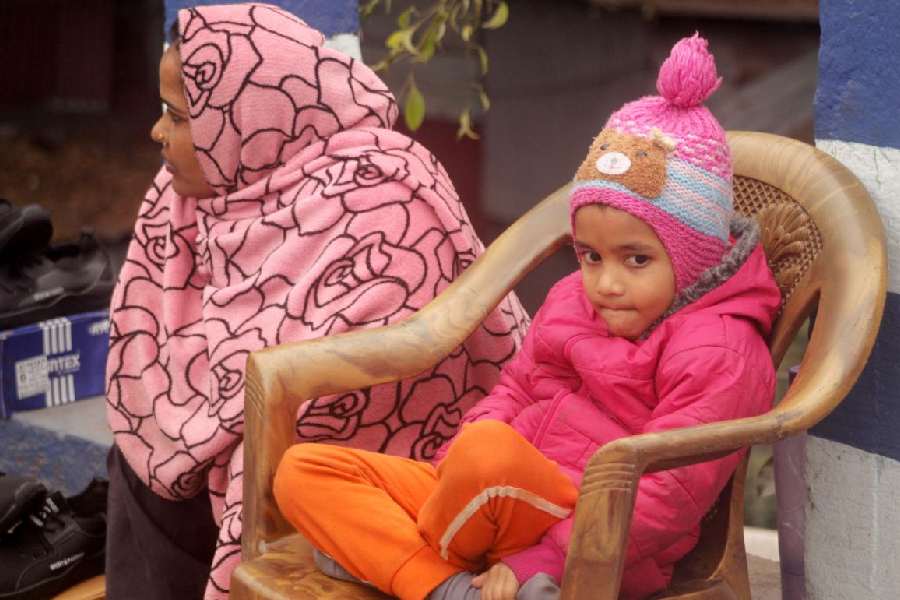 |
As the bus going towards Howrah Station reaches the Brabourne Road-Strand Road crossing the conductor calls out “Burrabazar chole ashun”. For the buses this is the Burrabazar stop. But ask the traders of Burrabazar and they will pause and then reply with a smile that they are not sure of the business district’s geographical limits.
Burrabazar has no beginning, no middle and no end. It is the ever-chaotic, over-abundant heart of Calcutta that keeps expanding within itself the way a cell divides. As one trader puts it, Burrabazar spreads from Posta in the north to Canning Street in the south, and from Strand Road in the west to Chitpur in the east. Within this rough boundary it is a world in itself.
It is a world that survives on the idea of money. On enterprise. On business practices that are like codes, on terms like hundi and rukka, on credit. “If you know a dalal then you can buy material without having money in hand. Moneylenders will give you money through a dalal. The moneylender may not talk to you directly but will find out about you from the dalal. The dalal will assure the moneylender that he won’t suffer a loss by giving money to you,” says a trader.
These hold the world of Burrabazar together. As also collective exercises of evasion, obliviousness and resistance to what doesn’t seem welcome. And obvious neglect from authorities — and an uncertain fate, like the one faced now by the traders of Nandaram complex and adjacent Tirpalpatti, which kept burning for four days from January 12.
One-stop shop
From Monday to Saturday Burrabazar bustles with activity. The traders proudly say that the area is the hub of all trade in eastern India. “This is eastern India’s largest wholesale market. If the business in Burrabazar stops for a week the entire eastern India will be affected,” says Alok Verma, a trader at Manohar Das Katra.
Each katra (market) is known for a particular item. There are approximately 25 katras in Burrabazar. “At Raja Katra, which originally belonged to the maharaja of Burdwan, most of the shops deal in spices. At Manohar Das Katra it is mostly hardware and textile. Vikram Chand Market and Khangrapatti sell mostly electronic goods and artificial ornaments,” says Prakash Sharma, the owner of a mobile phone shop on Brabourne Road. Jackson Lane sells greeting cards and Bonefield Lane chemicals.
Everything from toys to cereals, from spices to electronic goods, is sold at Burrabazar. “At China Bazar you will get a dozen pens for Rs 6. On the other hand there are clothes for trousers manufactured by Raymond that sell for Rs 1 lakh for 1.2 metre,” says Ranjit Kumar Surana, the secretary of Manohar Das Katra-Mungapatti Traders Association.
Burrabazar is still the place where you look for stuff you thought the world had lost forever and has its admirers. One is blogger Rimi B. Chatterjee, who teaches at JU and has recently written a novel. “Two days ago (before the fire)… I had come to Burrabazar in search of something no longer available in this mortal world — a safari suit… We cut across Brabourne Road into the warren of streets that occupies the irregular triangle between Brabourne Road and Mahatma Gandhi Road. As we had feared, readymade safari suits were as dead as Harshad Mehta, but we found this shop on Noormal Lohia Street . The shop-owner tried to sell me a blazer with rhinestones on it, but I asked him if he had any safari suits exactly like the one he was wearing. He said he could make it in 48 hours,” she says.
Fuzzy figures
 |
But such a resourceful place, asked to provide a figure for the quantity of any single item bought from manufacturers, does not have an answer. Traders say it’s impossible to provide an approximate count as the business done is huge. Statistics doesn’t matter here.
Burrabazar will also not readily look at why though the business may be there, the big names are missing. But old names are remembered with pride, the most notable among them being that of Raja Baldev Das Birla, who started the Birla empire. “His gaddi is still preserved near Mullick Street,” says Jitendra Singh, a trader near Mahatma Gandhi Road. The Bangars, Jalans and Bajorias, who owned jute mills, have left Burrabazar too.
The overcrowded nature of Burrabazar keeps the well-heeled and large-scale businesses away, but it doesn’t cause much worry. “The businessmen generally commute in cars. The narrow lanes and too many people make it tough for them,” reasons Surana.
“From the 70s the wealthiest Marwaris started to buy houses in places like Alipore and Ballygunge. They shifted their offices within a few years to the Dalhousie area. The gaddis were replaced by sophisticated offices,” says Ram Ratan Sharma, 73, who has run his business in Burrabazar for close to six decades.
The shift, he says, actually started long back. “After the riots of 1946 many well-known businessmen left the place. The labour trouble during the 70s also had its impact,” he adds.
Change, though, has been a constant at Burrabazar since the beginning. According to Calcutta, The Living City, vol. II, edited by Sukanta Chaudhuri, the Sheths, Basaks, Sheels and Dattas, the banias of Bengal, displaced by the construction of the new Fort William in Gobindapur, were compensated with more land in Sutanuti. The bi-weekly haat there grew into “Barabazar”, a prominent residential wholesale market.
By the late 1850s the place began to be dominated by Marwaris. Burrabazar changed again a hundred years later. “The Partition drove many refugees to this place. They arrived here without anything and Burrabazar was like a mother to them providing protection and livelihood,” says Sharma.
“After 1971 many Urdu-speaking Muslims came here after being driven out of Bangladesh. These people started their business on Canning Street and Colootola Street,” he adds.
Divide and sell
Over the years, the large gaddis have multiplied into very small shops or godowns, and layers and layers of unplanned — and illegitimate — construction has made mazes out of buildings, many-storeyed Bhool Bhulaiyas where it is easy to enter from one lane, get lost among the twisted, narrow staircases and masses of electric wires in the most unexpected places, storing the most unexpected materials — Nandaram market had 300 litres of diesel — and emerge into another lane. These have as much to do with traders as with governments over decades.
But traders refuse to buy the argument that many shops here are illegal. They don’t like fingers being pointed at themselves. “Everyone has trade licences and VAT numbers. How did the Calcutta Municipal Corporation (CMC) issue the licences in the first place?” argues Hansraj Sethia, a textile trader.
The problem, Burrabazar feels, lies in its circumstances and government apathy. “Whenever an old shop is sold it is purchased by more than two persons. Several small shops are in the place of one. Also, one business being split among several family members leads to several tiny shops,” says Surana.
“A 150-sq ft shop on Brabourne Road will cost around Rs 20 lakh to buy,” says Sharma.
There are a thousand other reasons to worry a businessman in Burrabazar. “Local goons control a particular region. If you start a new business in the area you will have to pay them,” says a trader. There is also the feeling that the ruling party doesn’t care about Burrabazar as it knows that not many votes come from there.
There is also a reluctance to disturb things if they are going well. A businessman may not want to move a bolster in his gaddi if that is considered auspicious.
Stretching the rules
The administration and the municipal corporation obviously could care more. But authorities have striking stories to tell when it comes to operating in Burrabazar.
Amitava Dasgupta, an engineer with the CMC, talks of the mission that he led to raze the illegitimate top floors of Nandaram market.
In 1986, the Supreme Court had declared the entire building illegal. The CMC demolished the 21st, 20th and the 19th floors in 1988 and the 17th, 16th and 15th floors between 1992 and 1993.
But when Dasgupta landed there first, he was in for a shock. The civic engineers, along with the demolition squad led by Dasgupta, had to come back after going up to the 10th floor.
Did they face resistance from the traders? Not at all. There was no staircase between the 10th and the 11th floors. The traders, to stop any demolition attempt, had placed a bamboo ladder between the floors. When municipal inspectors arrived, says Dasgupta, the traders would press a bell and those on the 11th floor would remove the ladder.
Dasgupta also says that then the owner of Nandaram Market had constituted a board to run the market. But all the other board members were the sweepers and darwans of the market.
Now the fate of about 1,500 traders in Nandaram market has become uncertain, not so because of the fire, but because of the illegal construction. It has made it difficult for them to take up immediate reconstruction on their own.
Yet Burrabazar remains a wonderful world. “I had been struck once again by the uniqueness of Burrabazar and its way of doing business, at the little shops where anyone can buy the raw materials of small enterprises: bag handles, zippers, foam lining, buttons, fabric, thread, cord, trimmings. As an inveterate do-it-yourself-er, I’m an old treader of these streets...,” writes Chatterjee.
“Yet repeatedly this uniqueness has been endangered by neglect, and will be swept aside entirely because someone in power will write ‘fire hazard’ on the file and sweep it away for a gigantic retail park to take its place, complete with food court and glittering multiplex. Other cities try to preserve their character and history because these things are simply theirs, but we have always been acutely embarrassed about doing so. Perhaps it’s because Burrabazar is the place of ‘non-Bengalis’, that dreaded uber-species.”

